Buffalo, NY Pollen and Allergy Report for Summer 2023
Pollen Allergy Trends in Buffalo, NY
When is pollen lowest in Buffalo, NY?

February
Lowest month total PPM
Avg. PPM
When is pollen highest in Buffalo, NY?

April
Highest month total PPM
Avg. PPM
How does pollen in Buffalo, NY compare to New York?
Buffalo has a lower average PPM than the state of New York.
Buffalo yearly avg PPM:
New York yearly avg PPM:
How does pollen in Buffalo, NY compare to the USA?
Buffalo has a higher average PPM than the USA.
Buffalo yearly avg PPM:
USA yearly avg PPM:
Is pollen worse this year in Buffalo, NY?
Spring 2023 was worse than spring 2022.
Spring 2023 PPM:
Spring 2022 PPM:
Average PPM in Buffalo, NY
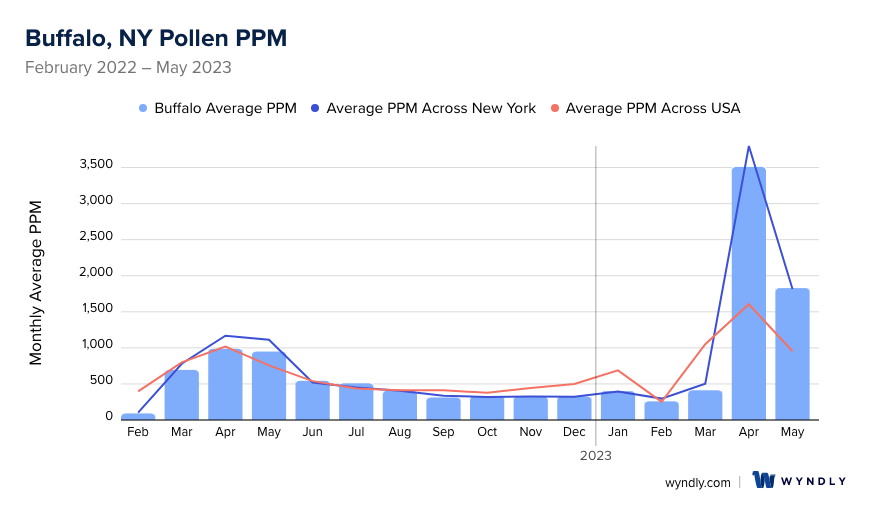
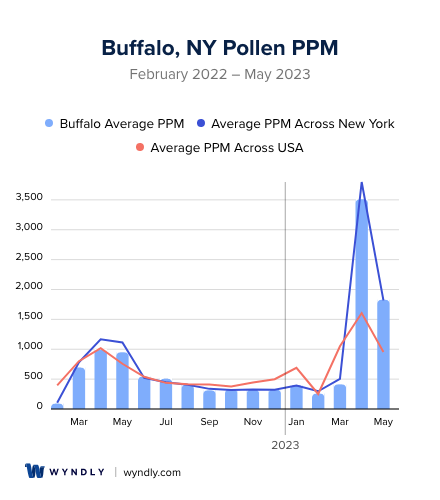
Buffalo, NY Pollen and Allergy Breakdown by Month
Grass
When is grass pollen highest in Buffalo, NY?
April has the highest grass pollen in Buffalo, NY with an average PPM of
When is grass pollen lowest in Buffalo, NY?
December has the lowest grass pollen in Buffalo, NY with an average PPM of
Tree
When is tree pollen highest in Buffalo, NY?
April has the highest tree pollen in Buffalo, NY with an average PPM of
When is tree pollen lowest in Buffalo, NY?
October has the lowest tree pollen in Buffalo, NY with an average PPM of
Weed
When is weed pollen highest in Buffalo, NY?
April has the highest weed pollen in Buffalo, NY with an average PPM of
When is weed pollen lowest in Buffalo, NY?
February has the lowest weed pollen in Buffalo, NY with an average PPM of
Buffalo, NY Pollen Monthly Breakdown by Pollen Type
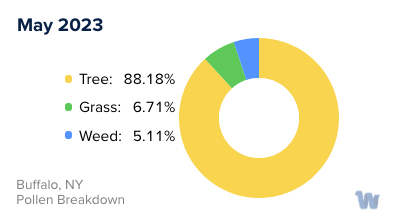
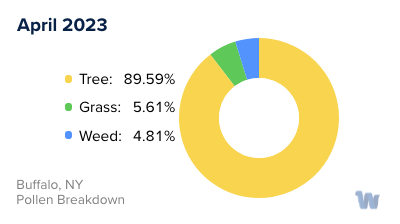
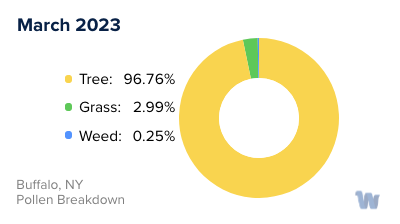
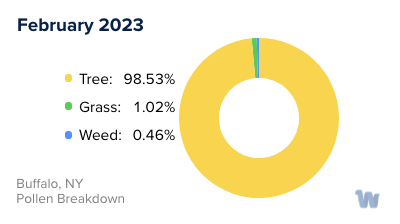
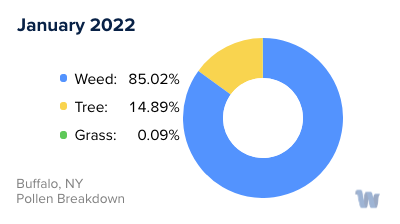
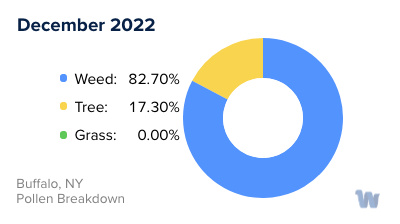
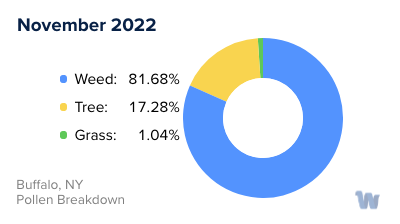
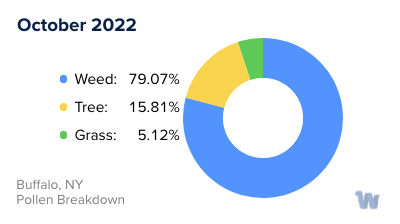
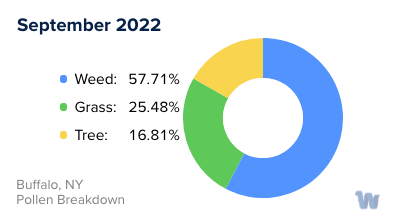
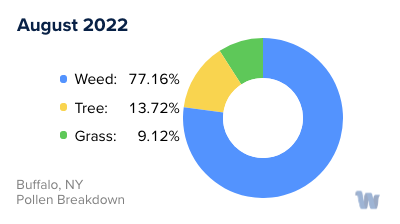
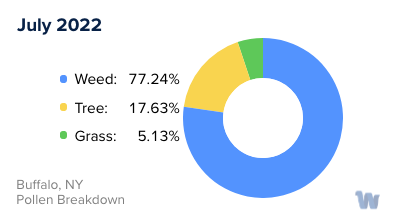
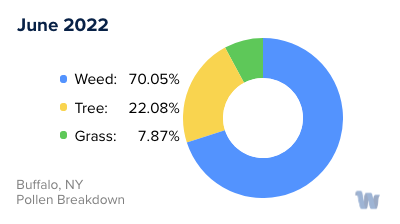
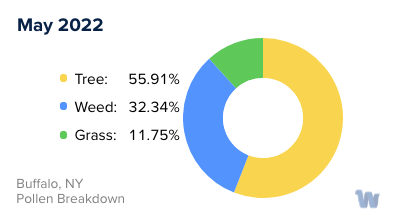
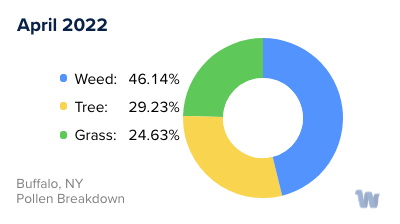
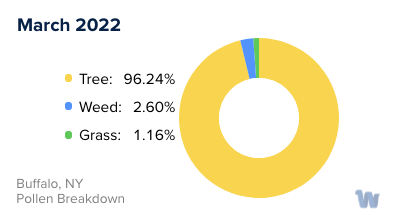
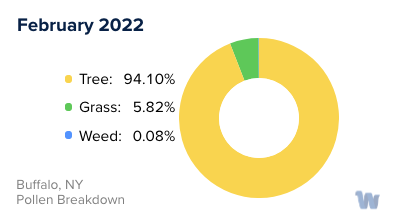
Pollen and Hay Fever in Buffalo, NY
For residents of Buffalo, New York, the blossoming of spring and the warmth of summer are often accompanied by the less welcome arrival of seasonal allergies, commonly referred to as hay fever. This condition, triggered by airborne pollen, can cause a multitude of symptoms, such as sneezing, runny nose, and itchy eyes. Understanding the types of pollen present and their respective seasons can help individuals prepare for and manage their allergy symptoms.
In Buffalo, tree pollen makes its presence known first, with May considered the peak season for this type of pollen. This is when trees such as oak, pine, and birch release their pollen, blanketing the city in microscopic particles that can set off allergic reactions.
As tree pollen levels start to taper off, grass pollen takes over. June is the grass pollen season in Buffalo, with grasses such as Timothy, Kentucky bluegrass, and ryegrass releasing their pollen. This shift from tree to grass pollen means there's little respite for allergy sufferers as the seasons change.
Finally, in mid-August, ragweed pollen becomes the main allergen. Despite its unassuming appearance, ragweed is a major cause of hay fever symptoms, with a single plant capable of producing up to a billion grains of pollen per season.
Therefore, for a large part of the year, from spring to late summer, residents of Buffalo face a rotating roster of airborne allergens. It's important to note that while this guide provides a general timeline, actual pollen levels can vary from year to year, and even day to day, due to factors such as weather and temperature. Despite these challenges, understanding the types of pollen and their seasons can provide a foundation for effectively managing seasonal allergies.

